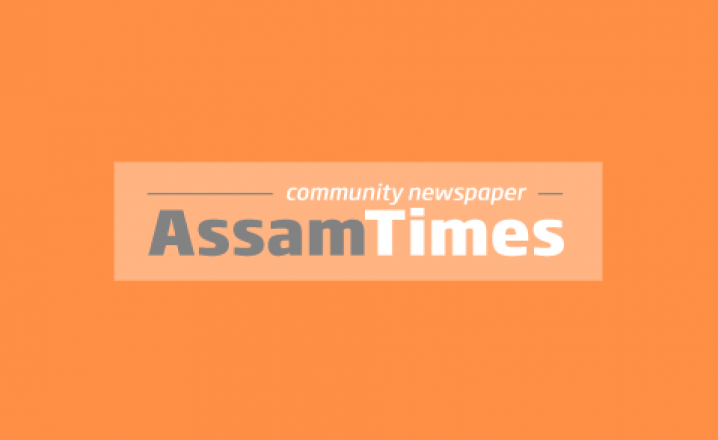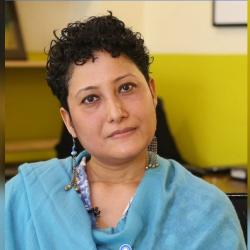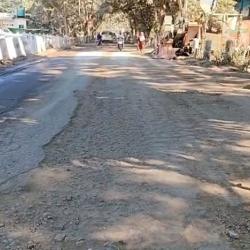The Archaeological Survey of India as a part of its 150th anniversary celebrations organized a two days regional conference on archaeology of North Eastern India recently in Guwahati. Scholars from Arunachal Pradesh, Assam, Manipur Meghalaya and Nagaland participated in the celebrations.
The earliest inhabitants of the northeastern region are assigned to the middle Pleistocene period as attested with the findings of paleoliths from its different arts including Daphabum area of Lohit district in Arunachal Pradesh, Khangkhui cave site, Songbu and Tharon cave of Manipur, Tilla site in Tripura, Rongram Valley of Garo Hills, Meghalaya. The region has also attested the prevalence of upper Paleolithic and Mesolithic cultures. The Mesolithic culture is not very prominent in the entire north-eastern part of the subcontinent whereas the upper Paleolithic culture is followed by occurrence of characteristic Hoabinhian culture akin to same assemblage of China and South-east Asia. The region under discussion also had a rich presence of megaliths occurring in the form of raised upright monoliths or menhirs and horizontally laid table stones. The tradition of erecting the megaliths is still continued in many parts of the region among the Naga, Khasi, Jaintia and Karbi tribes.
Since these findings occur in isolation from hilly terrain and flood plains amidst deep forest they are mostly secondary in nature and their cultural horizon is to be assessed in chronological frame work. A scientific dating is also to be probed which is the need of the hour. The data obtained by various scholars on the prehistoric researches assist in evolving a chronological frame work pertaining to the North-east region.
As far as historical archaeology is concerned, there are very few sites found excavated in this region as yet. Recently structural evidence encountered at Ambari excavation in Guwahati from the lowest level appears to be of Sunga-Kushana period. It is first time that an antiquity of the site has been pushed back to the Sunga-Kushana period in the region. However, the water logging at this level hampered further probing. Since the region is referred in epics and Purana’s as Pragjyotishpur occurrence of material culture pertaining to the much earlier period in further excavations cannot be ruled out.
The workshop aimed to delve upon the recent prehistoric and historical investigations carried out by various eminent scholars in this region. It made them to share and interact with each other their valued opinions, views and theories and also assisted in establishing well defined chorological frame work pertaining to the prehistoric and historic times prevailed upon in bygone era in this region.
In the inaugural session Regional Director (Eastern region),T J Baidya welcomed the participants. Dr Gautam Sengupta, DG,ASI, New Delhi stressed on need to improve the coordination with the local communities and research scholars towards better preservation of the historical monuments situated in various parts of the northeastern region. Addressing the participants as the chief guest Prof J N Phukan of Gauhati University suggested for the need of taking aggressive and affirmative action from the side of Archaeological Survey of India to stop encroachments near the centrally protected monuments. In the presidential address, ASI, New Delhi, Director A K Sinha emphasized the need of including more monuments/sites from the NE region in the centrally protected list.
On the first day of workshop ten papers were presented. A K Sharma, Archaeological Adviser, in culture department, Govt of Chhattisgarh presented his paper titled Heritage of North East India which highlighted the rich archaeological heritage of NE India as evident from the excavations at Sekta in Manipur, Bhaitbari in West Garo Hills district of Meghalaya and explorations conducted in Nagaland. Dr Promita Das of Gauhati University in her paper Historical archaeology of Kaili-Jamuna valley of Assam presented a glimpse of the material remains I the form of temple ruins, stone and terracotta sculptures of an ancient flourishing kingdom in the Kapili- Jamuna valley. Dr Projit Kumar Palit of Assam University, Silchar described the inscriptional evidences regarding the patronage of Buddhism in early North East India in his paper Inscriptions of Tripura: a Root of Buddhism in Early North-East India. Dr Watijungshi Jamir, of Kohima Science College , Nagaland in his paper Megalithic Monuments of the Angami Nagas presented the living megalithic traditions among the Angami Nagas. Dr M Manibabu, of Manipur University in his paper Pottery making ceramic ecology and system paradigm; an example of Processual.
Archaeological study from Manipur attempted to identify a series of feedback mechanisms related with the culture as well as the environment that favors or limits to the origin, development and continuity of the craft of pot making among an indigenous mongoloid population inhabited in the valley of Manipur, the Andro. A search for recurrent associated elements within the structured symbolic practice of erecting megaliths in Cherrapunjee in relation to their contextual meaning was presented by Dr Sukanya Sharma, of IIT, Guwahati in her paper Megaliths of Cherrapunjee. In his paper Some collections of
Terracotta Plaques, panels and art Motifs in the archeological museum, Sri Suryapahar, Bimal Sinha of Sri Suryapahar Archaeological Museum showed the terracotta plaques and art motifs preserved in the Archaeological Museum, Sri Suryapahar in Goalpara district of Assam which throw light on different cultural aspects of life as depicted in these plaques during the historical past in the region. Dr Aokumla Walling, of Nagaland university highlighted the relationship between oral tradition and archaeology in Nagaland in identification of archaeological sites.. Arup Bordoloi of Srimanta Shankardev Kalakshetra presented a paper on Buddhism in north east India and a few significant monuments from Assam. Dr Ceicil Mawlong, of NEHU, Shillong highlighted different types of Khasi Megaliths I her paper Khasi Megaliths: Problems and Prospects.
In the second day of academic session eleven papers were presented. Prof Alok Tripathi of Assam University, Silchar presented a paper on Archaeological Excavations in northeast India in twentieth century. Prof L Kunjeswori Devi of Manipur University presented the prehistoric archaeological remain in her paper recent discoveries of stone age culture of Kathong Hill Range, Chandel, Manipur. Dr Vinay Kumar of ASI, New Delhi presented his paper on Megalithic Culture of Northeast India. Dr H N Dutta, director, directorate of Archaeology, Assam gave a brief outline of the rock-cut caves excavated along the course of the river Brahmaputra in Assam in his paper rock-cut caves along the River Brahmaputra. Dr Tiatoshi Jamir, highlighted the potential of a community based archaeology in Nagaland from his recent work at Chungliyimit in Tuensang district of Nagaland in his paper ancestral sites, Local communities and Archaeology in Nagaland: Towards a collaborative Archaeology at Chungliyimit. The other papers presented were A Preliminary investigation at Tiyi Longchum Wokha, Nagaland by Dr R Chumbeno Nagullie, Japfu Christian College, Kohima, Stone age culture of Arunachal Pradesh by Dr Tage Tada, of Arunachal Pradesh Nayarit Deori of Arunachal Pradesh Megalithic Tradition in Nagaland: A study among the Lotha Nagas of Wokha district by Dr Jonali Devi of Cotton College, Guwahati Ethno-Archaeology of Shell fishing and Lime Production :Prospect for North-East by Dr Tilok Thakuria of NEHU, Archaeology of the Sacred contextualizing Ganesha in early Assam by Dr Rena Laisram of Gauhati University. The two day conference concluded with valedictory function chaired by Dr R D Choudhury, former DG, National Museum, New Delhi
- 13414 reads








Add new comment